Kratom – All You Need To Know About The South Asian Plant

What do coffee, women and beauty have in common? Well, apparently, they all play a part in the story of Kratom – the mysterious South Asian plant.
In the last decade, Kratom has gained acknowledgement and interest in the Western world, and many want to know more about this unique plant. However, the plant has a rich history in its place of origin, with numerous applications and strains all over Asia.
To learn more about the appearance, usage, and legality of Kratom, keep reading this article.
What is Kratom or Mitragyna Speciosa ?
Kratom is a plant commonly known as thang, kakuam, thom, ketum, and biak in the region it orginates from. The plant’s official name Mitragyna Speciosa Korth is derived from the Dutch botanist Pieter Willem Korthals, who first described the plant in detail in 1831.
The name Mitragyna is derived from the Greek words "mitra," meaning turban, and "gynē," meaning woman, referring to the shape of the stigma.
The word speciosa is derived from the Latin word "speciosus," meaning showy or beautiful, referring to the plant's attractive flowers.
Kratom, scientifically known as Mitragyna speciosa, is a fascinating member of the Rubiaceae plant family, closely related to the well-known coffee plant (Coffea spp.).
Just like its caffeinated cousin, the South Asians believe Kratom has a potent impact on the central nervous system, providing a remarkable boost to both physical and mental energy.We will probably never know why the coffee plant became more popular than its cousin, but that doesn’t diminish the historical significance of the Kratom plant.
For generations, it has been an integral part of the culture, particularly among labourers who sought its fatigue-fighting qualities during physically demanding tasks.
So what does this mysterious plant look like?
The kratom (Mitragyna Speciosa) plant is a tall, evergreen tree with distinctive characteristics. Kratom trees grow rapidly in fertile rainforest soil and can reach a height of 20 feet within two years of sprouting.
Since you’ve probably never seen one, here's what the Kratom plant looks like:
|
Size and Shape |
Tall, reaching heights of up to 82 feet in their natural habitat. However, when cultivated in other regions or as indoor plants, they are around 10 to 30 feet in height. |
|
Leaves |
Typically oval-shaped, glossy, and dark green in color. The size of the leaves can vary, with the largest leaves typically found at the top of the tree. |
|
Leaf arrangement |
Leaves are arranged in pairs along the stem, with one leaf growing opposite to the other. |
|
Veins |
Kratom leaves have prominent veins running through them. The color of these veins can vary and is often used to classify different kratom strains. Common vein colors include red, green, and white. |
|
Bark |
Smooth, grayish bark. |
|
Flowers |
Small, yellowish flowers with a tubular shape. Flowers are relatively rare and not a prominent feature of the plant. |
|
Fruit |
In the form of a capsule that contains numerous tiny seeds. |
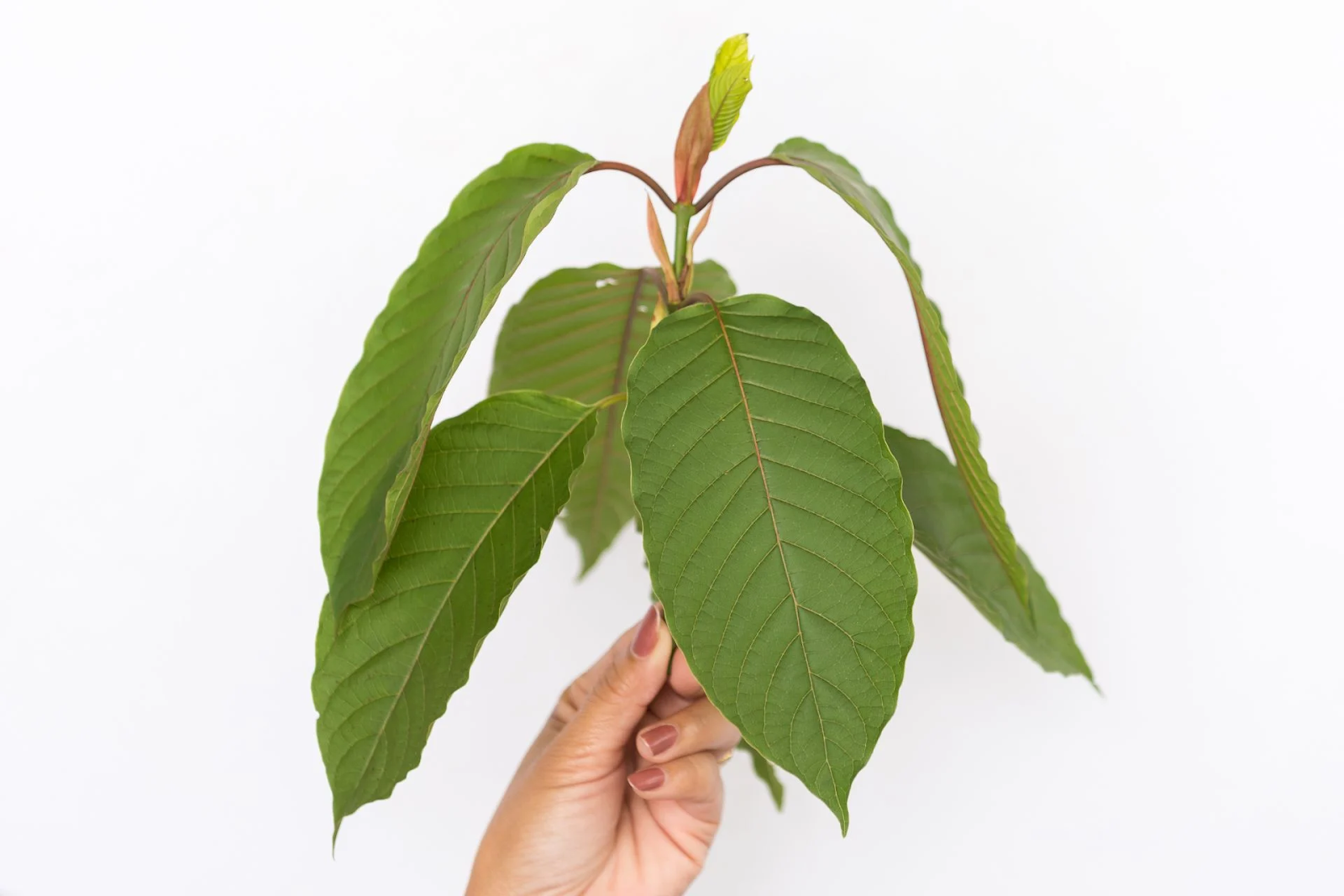
Chemical composition of Kratom leaves
Kratom leaves, scientifically known as Mitragyna speciosa, contain a complex array of naturally occurring compounds known as alkaloids. These alkaloids are organic compounds that consist of nitrogen atoms, along with elements like hydrogen, carbon, sulfur, oxygen, chlorine, and phosphorus.
While plants, especially kratom trees, are the primary source of these alkaloids, some animals also produce similar compounds. Let's delve into some of the key alkaloids present in kratom and explore their individual properties:
1. Mitragynine
Mitragynine is the most commonly isolated alkaloid in Mitragyna speciosa.
Mitragynine's chemical structure contains hydrogen, oxygen, nitrogen, and carbon atoms, and its concentration can vary among different Kratom strains.
2. 7-hydroxymitragynine (7-OH):
7-OH is a naturally occurring indole alkaloid found in Kratom. It is considered the second most important component of the plant. Similar to Mitragynine, 7-OH binds to the same receptors in the brain.
3. Speciociliatine
Speciociliatine is an alkaloid in kratom with similarities to mitragynine. Researchers debate whether it acts as an agonist or antagonist at certain receptors in the brain. Its potential effects include energy enhancement, mood improvement, and discomfort relief.
4. Speciogynine
Speciogynine is another alkaloid found in Kratom. It constitutes a significant percentage of the plant's composition, up to 8%. While its specific biological function is not well understood due to limited research, it may contribute to relaxation.
5. Corynanthine
Corynanthine is present in Kratom, primarily in red vein strains.It acts as an antagonist, suppressing the body's response to adrenaline, which may lead to muscle relaxation.
6. Paynantheine
Paynantheine is another minor alkaloid in Kratom, formed during the plant's metabolic process. It shares similarities with 7-OH.
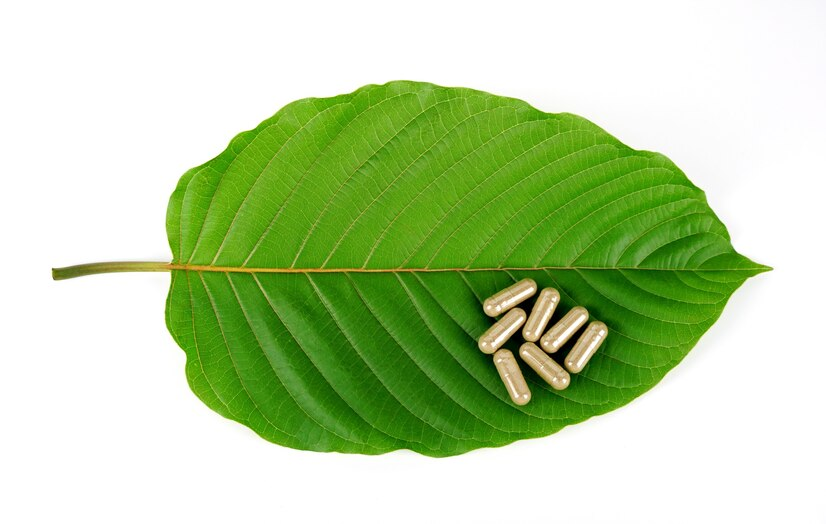
How is Kratom used?
Kratom (Mitragyna speciosa) can be consumed in various forms, each offering a slightly different experience. Here are some common methods of Kratom consumption:
-
Chewing fresh leaves – In its native regions of Southeast Asia, fresh Kratom leaves are sometimes chewed. This method provides a mild stimulant effect, similar to chewing coca leaves in South America.
-
Dried and crushed leaves –This is one of the most traditional ways of using Kratom. The dried leaves are crushed into a powder, which can be brewed into a tea or simply mixed with water and ingested.
-
Kratom capsules – For those who prefer a convenient and measured dosage, Kratom is available in capsule form. Each capsule contains a pre-measured amount of Kratom powder.
-
Kratom extracts – Extracts are highly concentrated forms of Kratom made by extracting the alkaloids from the leaves. They are usually available in liquid or powder form and are much more potent than regular Kratom.
-
Kratom tea – Kratom leaves or powder can be steeped in hot water to make tea. The tea may have a bitter taste, but some users find it to be an enjoyable way to consume Kratom.
-
Kratom topicals – Kratom-infused creams or balms are relatively new on the market, and they are primarily for localized relief from discomfort.
Now we will go into detail regarding Kratom forms and different species.
Kratom forms
1. Kratom Capsules
Kratom capsules are created by filling vegetable-based capsules with Kratom powder. This process is a mess-free option because it eliminates the need for measuring and handling loose powder.
Kratom capsules provide a convenient and precise way to consume Kratom. Each capsule contains a pre-measured dosage, ensuring consistent and accurate intake. This is especially valuable for those new to Kratom or individuals seeking a hassle-free method of consumption.
The popularity of Kratom capsules has led to the emergence of various brands and strains, catering to a wide range of preferences. To ensure the highest quality of Kratom you should choose brands that have a five step process for lab testing.
2. Kratom Powder
Kratom powder is derived from the dried and ground leaves of the Mitragyna speciosa tree.
Kratom enthusiasts have several options for preparing and consuming Kratom powder. It can be brewed into a tea, mixed with water or other beverages, or incorporated into food. The “toss and wash” method, where the powder is quickly washed down with water, is another common approach in Asia.
Finding high-quality Kratom powder is essential for a satisfying experience. Reputable suppliers carefully source, process, and test their Kratom products for purity and potency. Product quality indicators include the strain, color of the veins, and the source region.
With Kratom Country, you don’t need to worry about quality, just focus on choosing the best option.
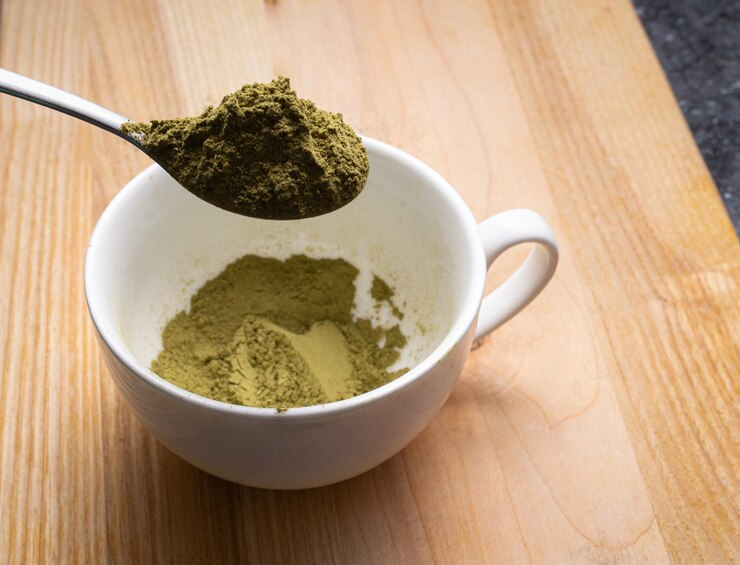
3. Kratom Leaf
For centuries, Kratom leaves have been an integral part of the traditional cultures of Southeast Asia, particularly in countries like Thailand, Malaysia, Indonesia, Myanmar, and Papua New Guinea.
The leaves were traditionally used by laborers and farmers, who would chew fresh Kratom leaves to combat fatigue and increase energy during long hours of work in the fields.
Fresh vs. Dried Leaves
The use of Kratom leaves can vary depending on their freshness. Fresh leaves are occasionally chewed directly for their immediate stimulant effects, very similar to chewing coca leaves in South America. However, fresh leaves are not readily available outside of the regions where the Mitragyna speciosa tree grows naturally.
To preserve Kratom for extended use and distribution, leaves are typically dried and ground into a fine powder. Dried Kratom leaves can then be prepared as tea, mixed with water, or used in various forms. Due to this fact, dried leaves are way more popular.
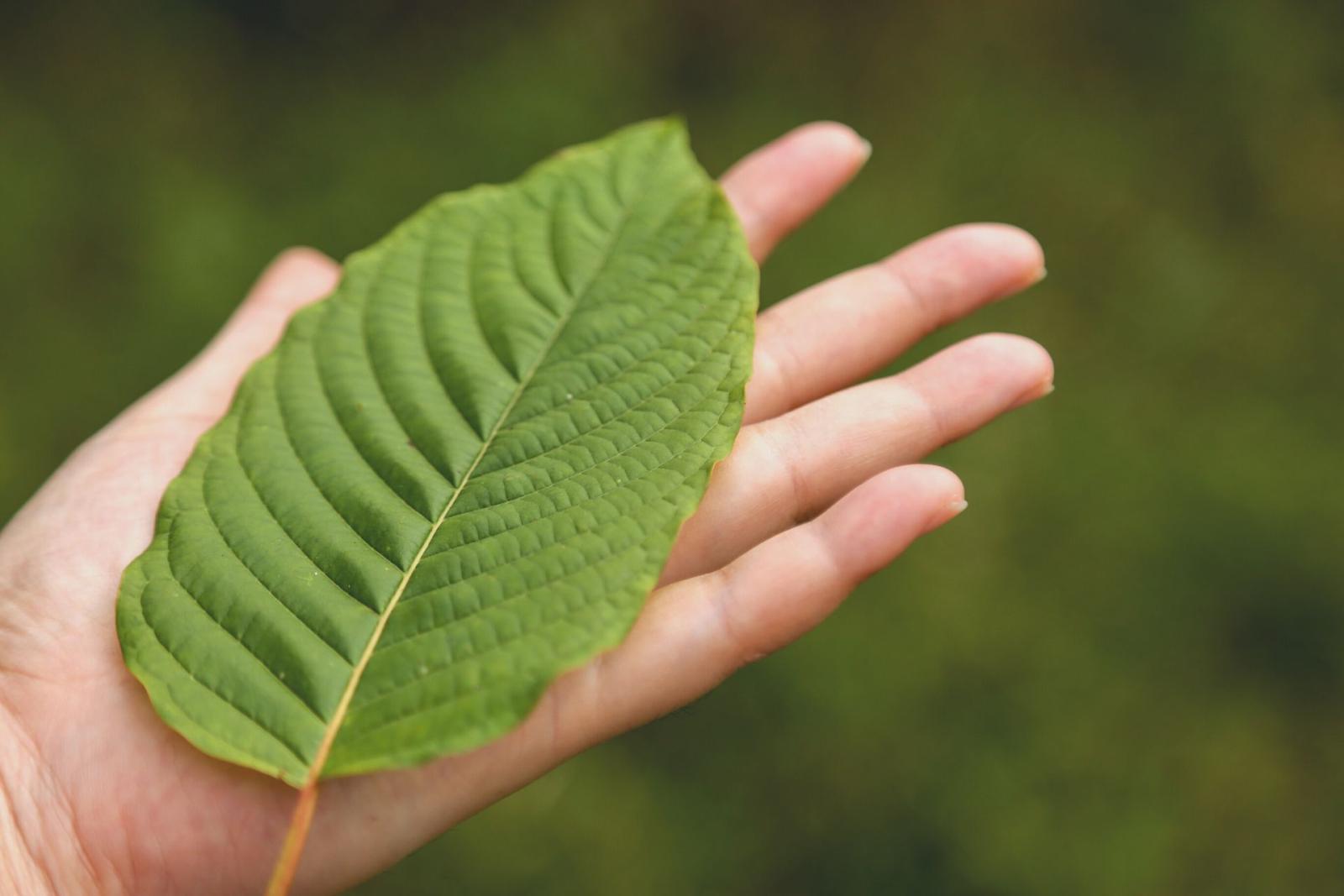
Kratom by color
1. Red Kratom
Red Kratom gets its name from the red veins and stems that run through the leaves. These veins are indicative of a higher concentration of specific alkaloids, such as 7-hydroxymitragynine.
Red Kratom is often associated with relaxation, sedation, and pain relief. It is considered one of the more calming and soothing strains, making it a preferred choice for evening or nighttime use. Users often report feelings of tranquility and a sense of well-being.
The most popular Red Kratom strains are:
-
Red Bali
-
Red Maeng Da
-
Red Thai
-
Red Borneo
-
Red Malay
-
Red Indo
-
Red Sumatra
2. Green Kratom
Green Kratom is a type of kratom that is harvested from the leaves of the Mitragyna speciosa tree. It is called "green" because of the color of the veins in the leaves. Green Kratom is known for its unique duality, providing both stimulating and sedative effects depending on the dosage you use.
In lower doses, it can provide mild pain relief while activating the central nervous system, leaving users feeling more alert, focused, and energized. In larger doses, it can provide powerful pain relief and euphoria.
Most popular green strains
Green Malay Kratom is known for its long-lasting effects, adaptability, and high concentration of alkaloids. It is considered one of the best strains of Kratom due to its ability to provide pain relief, energy, and improved concentration.
Green Thai Kratom is known for its stimulating effects, providing a clean boost of energy without the jitters or anxiety that can come with caffeine. It is also known for its mood-enhancing properties and ability to provide mild pain relief.
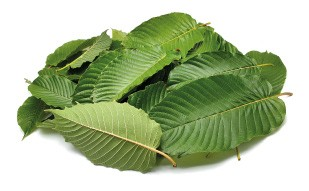
3. White Kratom
White Kratom is a type of kratom that is harvested from the leaves of the Mitragyna Speciosa tree. It is called "white" because of the color of the veins in the leaves.
White Kratom is known for its energizing and stimulating effects, providing a clean boost of energy without the jitters or anxiety that can come with caffeine. It is also known for its mood-enhancing properties and ability to provide mild pain relief.
White kratom capsules and white kratom powder are both popular choices among those seeking a natural and uplifting supplement to enhance their daily routines.
Popular white Kratom strains
There are several noteworthy white strains of Kratom, including White Borneo, White Thai, White Elephant, White Horn, and White JongKong.
White Borneo Kratom is known for its ability to increase focus, persistence, and vigor, and is considered one of the best strains of Kratom due to its ability to provide pain relief, energy, and improved concentration.
White Thai Kratom is known for helping people stay awake, alert, and focused.
White Elephant Kratom is known for its more intense alkaloid content.
White Horn Kratom is known for its ability to provide a clean boost of energy.
White JongKong Kratom is an exceptional variety grown in the Jongkong locality, providing a mixture of two White Vein varieties combined with a 50/50 ratio.
Seven Kratom strains
1. Maeng Da Kratom
Maeng Da Kratom is a type of kratom strain that is native to Thailand and is known for its high potency and unique qualities. The name "Maeng Da" roughly translates to "pimp grade" in Thai, indicating its reputation as a premium strain of Kratom.
Maeng Da Kratom is believed to have been created through a process of selective breeding, resulting in a strain with a higher concentration of alkaloids than other strains of kratom
Maeng Da Kratom is unique in that the leaves are dried for longer than the leaves of other strains of kratom, resulting in a more potent and concentrated product. In addition to its stimulating effects, Maeng Da Kratom is also known for its pain-relieving properties and mood-enhancing qualities.
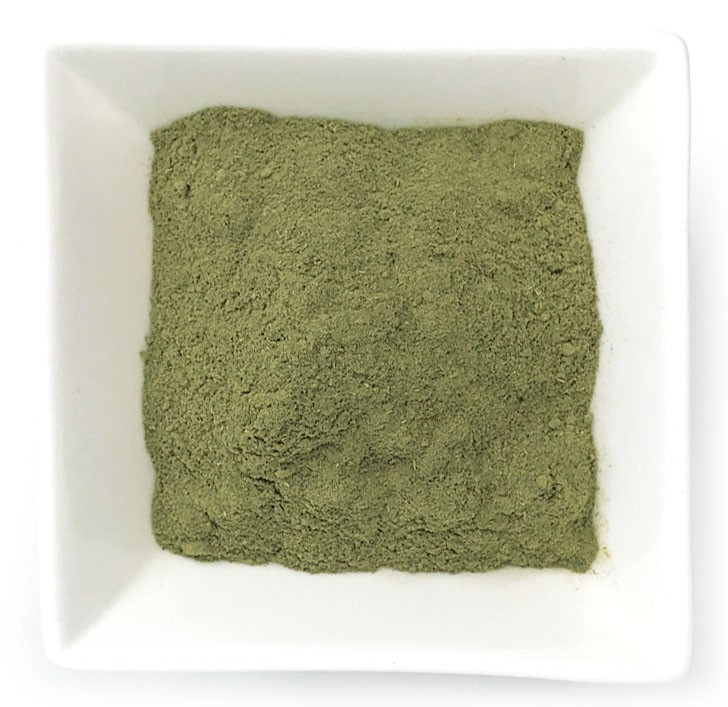
2. Bali Kratom
Bali Kratom is a popular strain of kratom that is named after the island of Bali in Indonesia, where it is believed to have originated. Bali Kratom is often preferred by beginners due to its mild effects and versatility.
Bali Kratom is known for its balanced effects, providing a combination of energy and relaxation. It is often used for pain relief, anxiety, and stress, as well as for its mood-enhancing properties. Bali Kratom is also versatile in that it can be used in a variety of forms, including capsules, powder, and extracts.
Bali Kratom is often compared to other strains of kratom, such as Green Malay and Maeng Da. Green Malay Kratom is known for its long-lasting effects, adaptability, and high concentration of alkaloids.
However, Bali Kratom is often preferred by beginners due to its mild effects and versatility, while experienced users often prefer Green Malay and Maeng Da due to their high potency and unique effects.
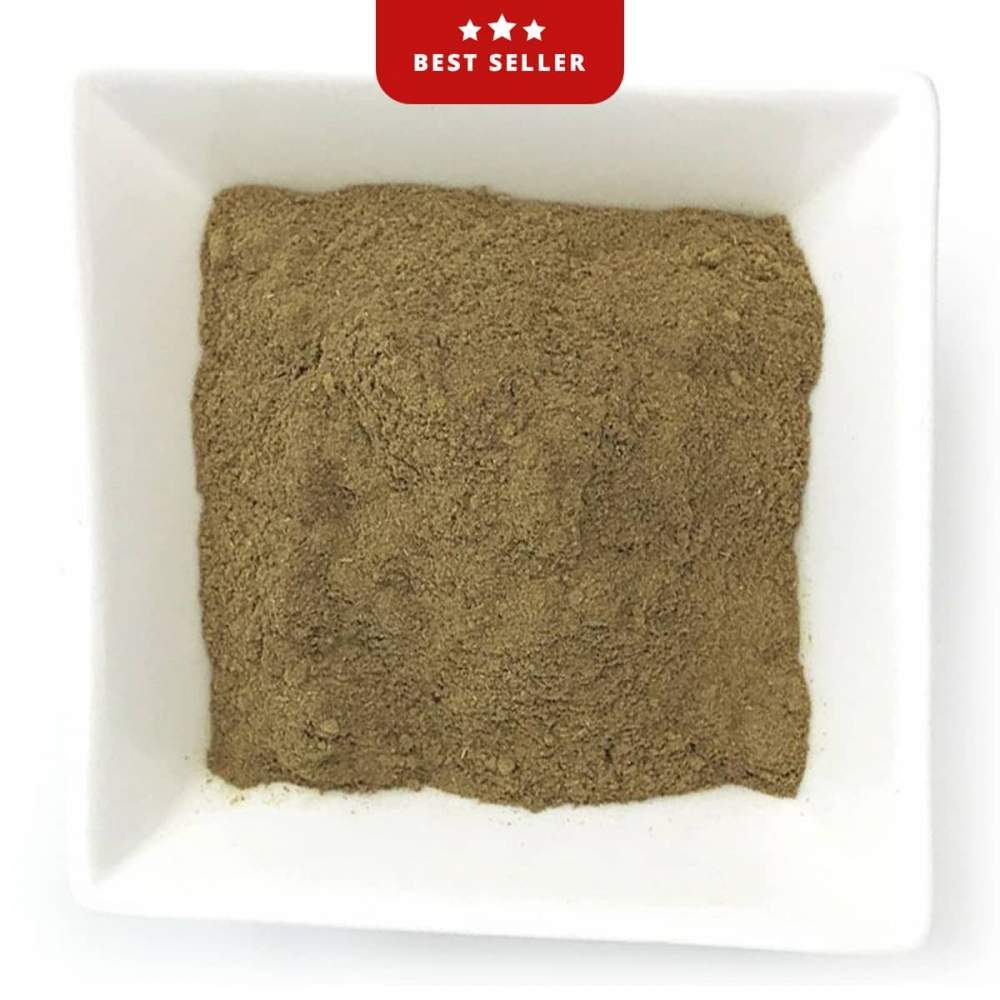
3. Borneo Kratom
Borneo Kratom is one of the most popular strains of Kratom and has quickly gained a reputation for high potency and wide availability. Borneo is an island located in Southeast Asia, and it is one of the largest producers of Kratom in the world. Borneo Kratom is known for its relaxing and soothing properties, making it a popular choice for those seeking relief from stress, and pain.
Red-vein Borneo Kratom is said to offer soothing effects as well as relaxing, euphoric, and sleep-promoting overtones.
Green Borneo Kratom is known for its idyllic balance between stimulating and relaxing qualities, making it an ideal strain for those seeking both energy and relaxation.
White Borneo Kratom is known for its euphoric and anxiety-reducing properties, making it a popular choice for those seeking relief from anxiety and depression
Keep in mind that Borneo Kratom is produced in three different countries: Indonesia, Malaysia, and Brunei. Each country produces Kratom with slightly different characteristics, and the strains are often named after the region in which they are grown.
For example, Indonesian Borneo Kratom is known for its high potency and energizing effects, while Malaysian Borneo Kratom is known for its relaxing and soothing properties. Brunei Borneo Kratom is less common than the other two varieties.
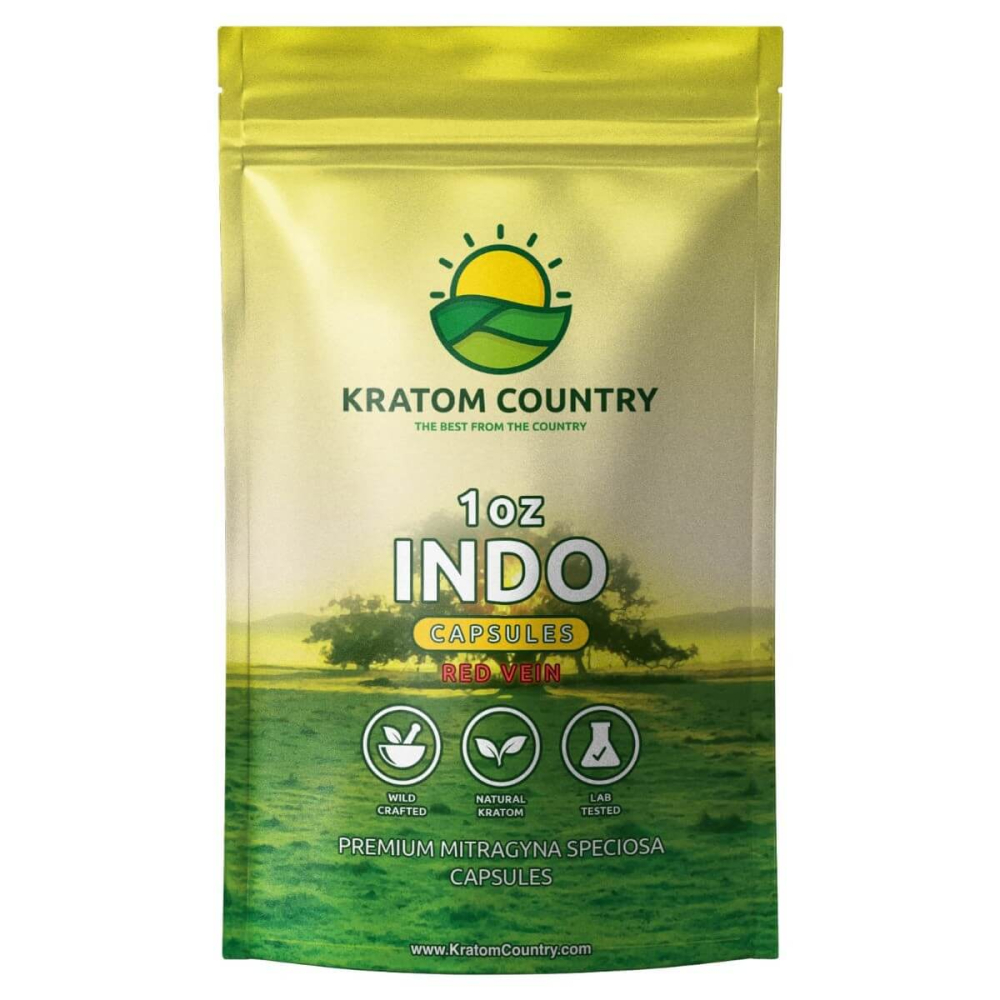
4. Thai Kratom
Thai Kratom is a type of Kratom that is harvested from the leaves of the Mitragyna speciosa tree in Thailand. Thai Kratom leaves have a darker green color compared to other strains, and the veins are typically red or green.
Thai Kratom comes in both red and green vein varieties. Red Thai Kratom is known for its relaxing and soothing properties, while Green Thai Kratom is known for its stimulating effects.
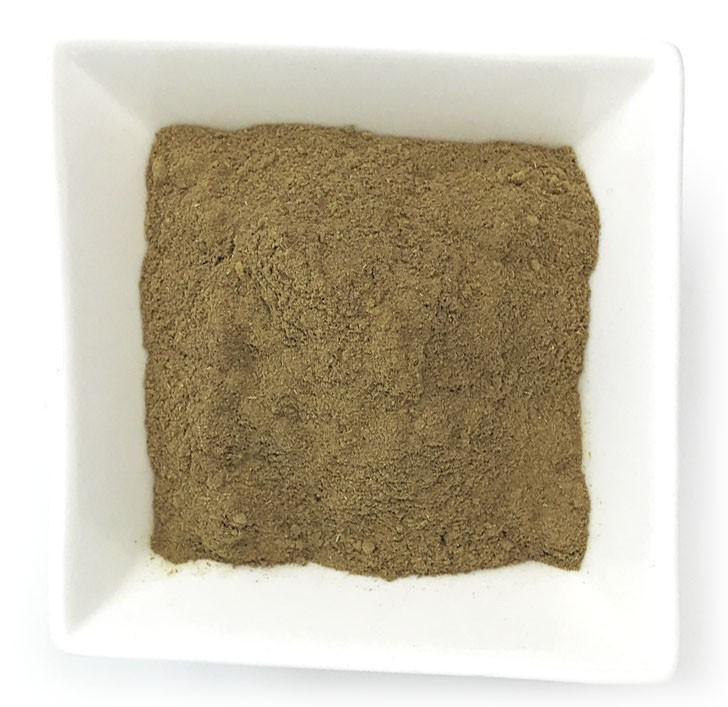
5. Malay Kratom
Malay Kratom is a type of kratom that is harvested from the leaves of the Mitragyna speciosa tree in Malaysia. Malay Kratom leaves have a lighter green color compared to other strains, and the veins are typically green or white. Malay Kratom comes in both green and red vein varieties.
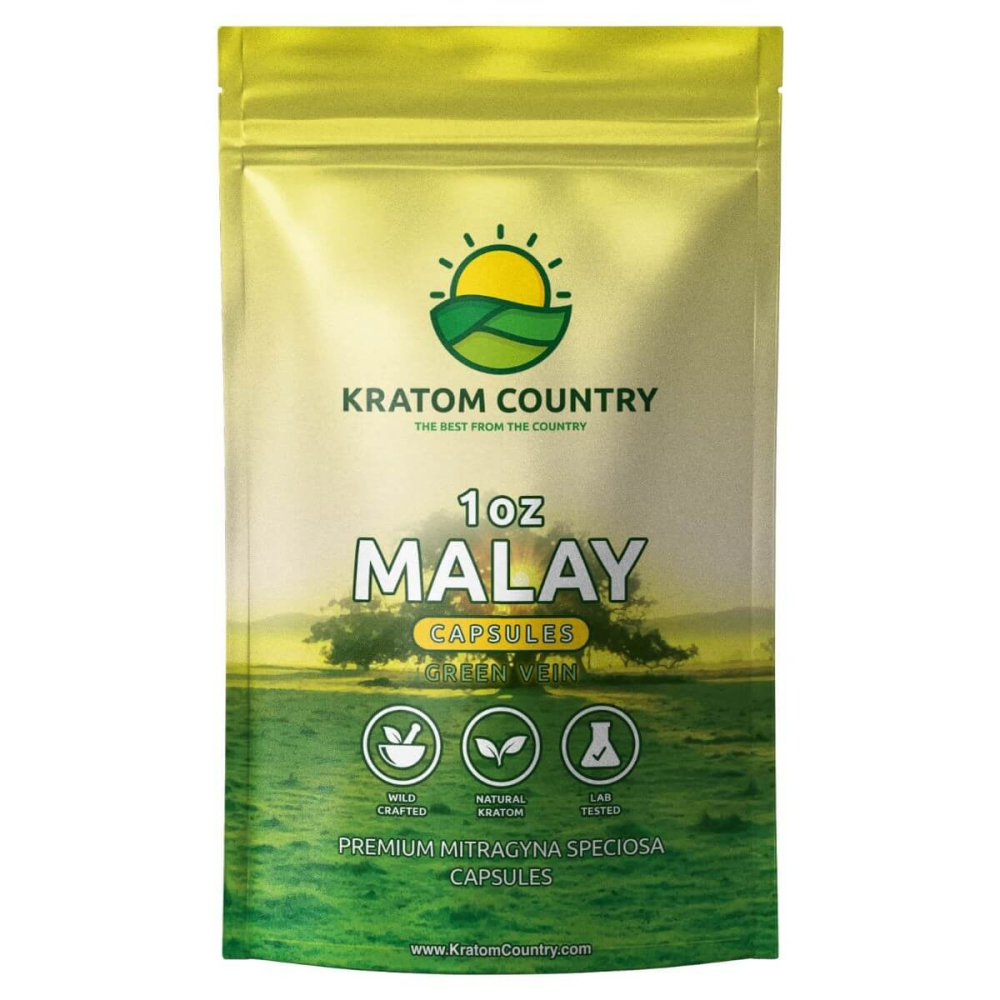
6. Vietnam Kratom
Vietnam Kratom is a type of kratom that is harvested from the leaves of the Mitragyna speciosa tree in Vietnam. Vietnam Kratom leaves have a darker green color compared to other strains, and the veins are typically red or green. It is considered one of the best strains of Kratom due to its adaptability and high concentration of alkaloids. At the store, you can choose between Vietnam kratom capsules and Vietnam kratom powder based on your preferred method of consumption.
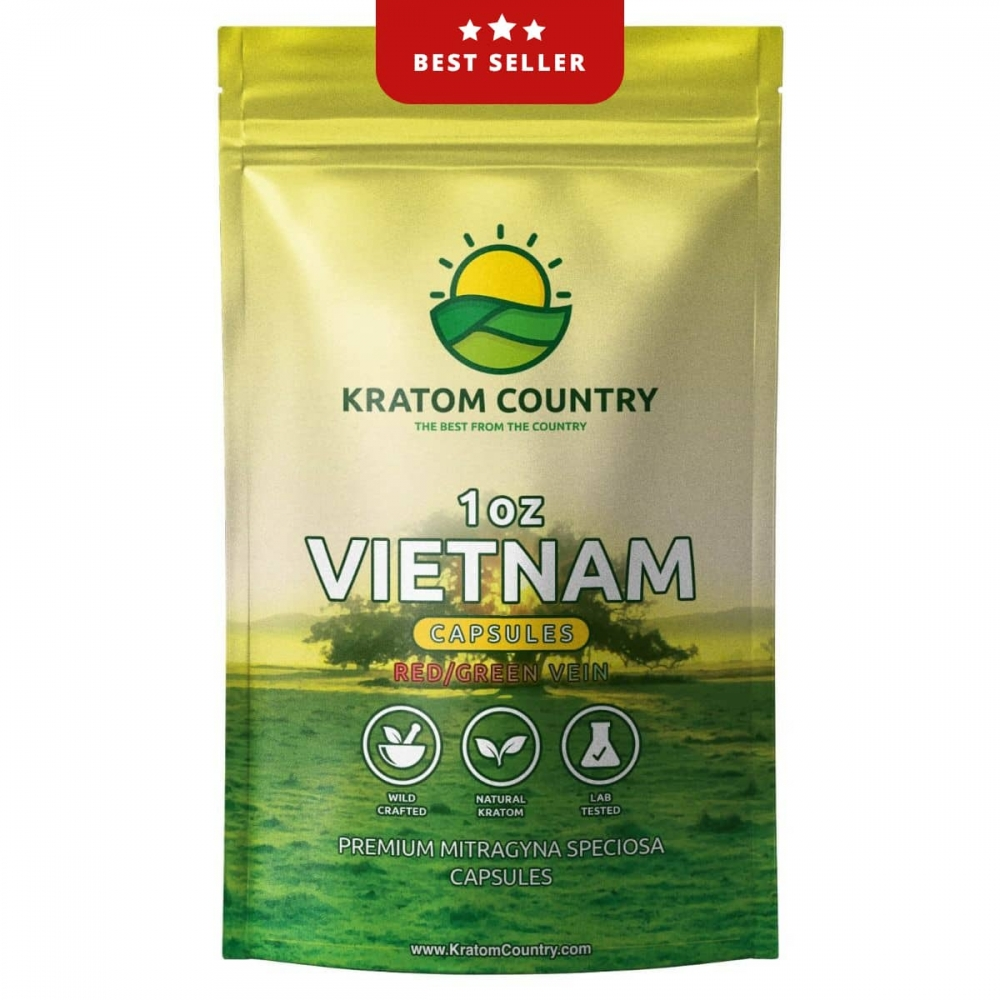
7. Kali Kratom
Kali Kratom is available in both red and green vein forms. The green vein Kali Kratom leaf grows as a pale green but dries into a gold/yellow color. The red vein Kali Kratom has a darker color compared to the green vein, and the veins are typically red or green
The effects of Kali Kratom are consistent with other strains even though Kali Kratom is known for its high potency, providing a more concentrated and powerful product compared to other strains
Green Kali Kratom is similar to Green Malay Kratom in that it provides pain relief, energy, and improved concentration. Red Kali Kratom is similar to Red Bali Kratom in that it provides relaxing and soothing properties.
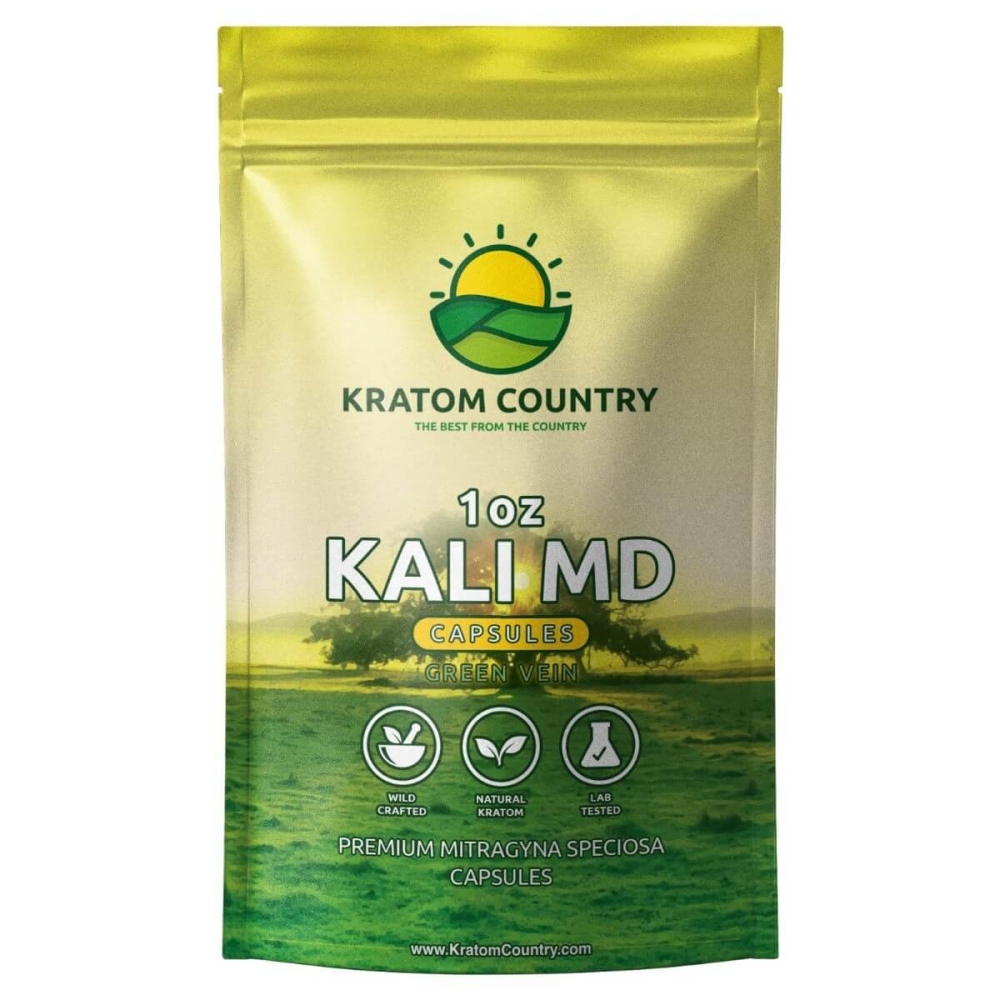
Is Kratom legal?
In the United States, Kratom is legal at the federal level, but its legality varies from state to state. It is essential to research and understand the specific laws and regulations regarding kratom in your area before considering its cultivation or use.
Kratom can NOT be shipped or sold to the following states: Alabama, Arkansas, Indiana, Rhode Island, Vermont, Wisconsin, San Diego, CA, Jerseyville, IL, Sarasota County, FL. In addition, we do NOT ship to the following countries: Australia, Burma, Denmark, Finland, Lithuania, Malaysia, Myramar, Poland, Romania, South Africa, Sweden, Thailand, Vietnam.

Conclusion
By now you have found out everything about the origin, use, legality and types of Kratom leaves. If you want to learn more about this interesting plant, feel free to refer to our blog.
However, if you want to try some Kratom leaves, capsules or powder, look no further than Kartom Country. Established in 2010, Kratom Country has worked hard to provide you with high-quality products, great customer service, and free delivery on qualifying orders.
Order now, and get your Kratom delivered to you as fast as possible.
FAQs
Where can I buy Kratom?
You can buy high-quality Kratom products from www.kratomcountry.com. We offer premium, pure Kratom with fast delivery. Some of our most popular products are Kratom powder, Kratom leaf, and Kratom capsules.
Can I grow Kratom at home?
Growing Kratom is a tricky topic due to its (il)legality. Before setting up your Kratom garden, research whether the herb is legal in your area. If the local authorities criminalize the plant, it’s best to avoid cultivating it. Friendly kratom grow zones include Wyoming, West Virginia, Delaware, and Florida.
Can Kratom replace any medication?
No, we don’t advise using Kratom as a replacement for any medication. Consult your doctor about mixing any other natural products with your medication. None of the products sold on our website are intended to diagnose, treat, cure, or prevent any disease or medical condition.


Comments